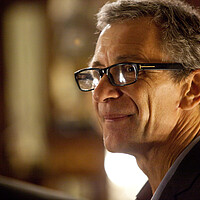Antarctica expedition: Are research and tourism a toxic mix?
Loading...
| Sydney
A botched expedition to Antarctica that left two ships stranded in sea ice has disrupted international scientific research programs while raising questions over the future of tourism on the frozen continent as well as multimillion-dollar rescue operations.
The Akademik Shokalskiy, carrying members of the Australasian Antarctic Expedition, became trapped on Christmas Eve about 100 nautical miles east of the French Antarctic station Dumont D'Urville. The Chinese icebreaker Xue Long, which was diverted to free the Russian ship, also became icebound.
The Shokalskiy was carrying 52 passengers, half of them tourists who paid up to $16,900 for a four-week cruise to commemorate the 100th anniversary of an Antarctic journey led by famed Australian explorer Douglas Mawson. The remaining passengers were scientists, students, and journalists.
The passengers were finally airlifted by helicopter from the Xue Long and transferred to the Aurora Australis, which was expected to arrive at Australia's Antarctic base Casey Station early this week. The US Coast Guard’s Polar Star, one of the most powerful nonnuclear icebreakers, left Sydney on Saturday to cut a channel to free the stricken ships.
But according to reports in the Russian and Chinese media the Polar Star may not be needed, as the ships had taken advantage of shifting winds to free themselves from the ice packs. Captain Igor Kiselyov of the Russian ship told the Itar-Tass news agency that it had already moved more than 20 nautical miles. The state-run Chinese news agency Xinhua said the Xue Long had reached open water on Tuesday evening local time.
Chris Turney, the leader of the Australasian Antarctic Expedition, was forced to defend his group from accusations that the voyage to Antarctica had been a poorly planned tourist trip with little scientific value.
"The [expedition] is not a jolly tourist trip as some have claimed," he told The Observer newspaper, adding that bad luck and not human error had caused the ship to get stuck. "There was nothing to suggest that this event was imminent."
He also rejected suggestions that the stranding was related to climate change and insisted that the expedition was carrying out vital scientific research focusing on marine biology and oceanography.
Anthony Bergin, an Antarctica specialist and deputy director of the Australian Strategic Policy Institute, says the stranding raises important issues about how such "pseudo scientific" expeditions are conducted.
"Combining tourism with science inevitably creates commercial tensions, and the demands of tourists always win," says Dr. Bergin. "After this incident, the guidelines for tourism in Antarctica will need to be revisited or tightened up."
Postings by Australian Greens senator-elect Janet Rice on her blog reveal that the ship’s captain was concerned about the passengers undertaking a shore expedition despite worsening conditions.
"I’m told the Captain was becoming rather definite late in the afternoon that we needed to get everyone back on board ASAP because of the coming weather and the ice closing in," Ms Rice wrote, adding: "I’m sure the Captain would have been much happier if we had got away a few hours earlier."
According to the expedition’s website, paying passengers were promised "a truly unique voyage, offering the public an opportunity to take part in an exciting scientific expedition to the Antarctic continent." Drones were to be used to ensure a safe passage through the ice, but it appears that such precautions failed to prevent the 71-meter-long ship (about 233 feet) from getting stranded.
Draining resources
French Polar Institute director Yves Frenot told Agence France-Presse that the rescue operation had drained resources from the French, Chinese, and Australian scientific missions in Antarctica.
"There's no reason to place Antarctica off limits and to keep it just for scientists, but this tourism has to be monitored and regulated so that operators can be sure of getting help if need be," Mr. Frenot said.
Figures from the International Association of Antarctica Tour Operators show that of the 25,284 tourists who visited the frozen continent in 2012-13, 3,280 were Australians, with the largest numbers coming from the United States and Germany.
Meanwhile, the bill of the rescue operation continues to mount. Diverting the Aurora Australis from from its scheduled resupply at Casey station is expected to cost more than $900,000, with a similar amount being touted for the Polar Star’s emergency southward dash. The stranding of the Xue Long is expected to delay China’s Antarctic research program by several weeks.
According to Bergin, the cost of freeing the Akademik Shokalskiy and rescuing its passengers is only one consideration. He says the incident also highlights the positive nature of international cooperation in Antarctica.
"When it comes to search and rescue operations," he says, "the Antarctic Treaty is clearly working well."





